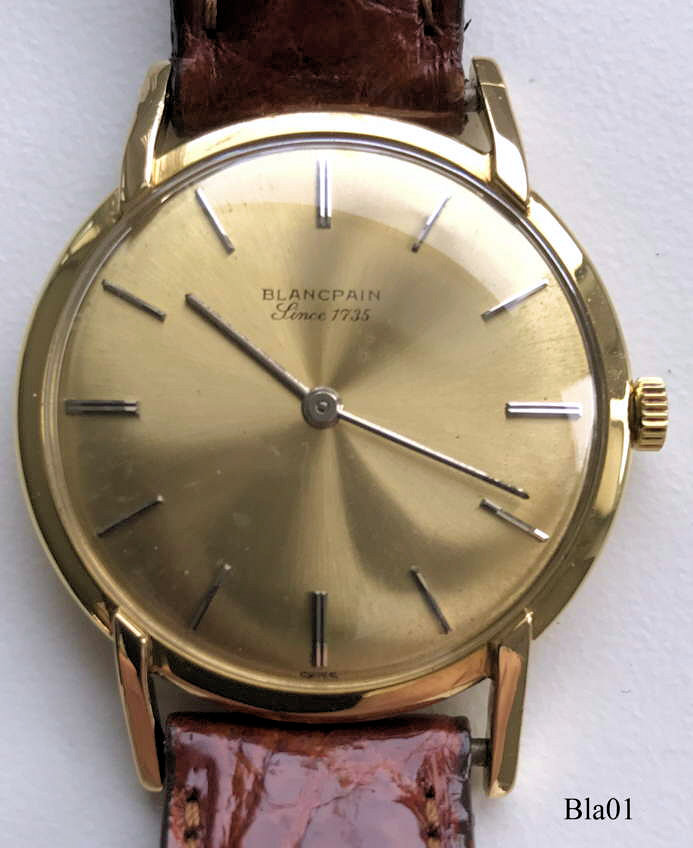|
Jehan-Jacques Blancpain started making watches in 1735 in Villeret, Switzerland. He founded the Blancpain brand, which today is the oldest watch manufacturing in the world, setting up his first workshop on the upper floor of his house at Villeret, in the present-day Bernese Jura.
In 1815, Frédéric-Louis Blancpain, the great-grandson of Jehan-Jacques, who was head of the family business at the time, modernized production methods and transformed the traditional craft workshop into an industrial undertaking capable of serial production. By replacing the crown-wheel mechanism with a cylinder escapement, Frédéric-Louis introduced a major innovation into the watchmaking world. In the second half of the 19th century, as industrialization took hold, the prices of watchmaking products were falling and many workshops were fated to close down. To face up to American competition, in 1865 Blancpain built a two-storey factory by the River Suze and made use of water power to supply the electricity needed for its production processes. By modernizing its methods and concentrating on top-of-range products, Blancpain become one of the few watchmaking firms to survive in Villeret. In 1926, the Manufacture entered into a partnership with John Harwood and started marketing the first automatic wristwatch.
The year 1932 saw the end of the family's management of the firm, which had lasted for over two centuries. On the death of Frédéric-Emile Blancpain, his only daughter, Berthe-Nellie, did not wish to go into watchmaking. The following year, the two members of the staff who had been closest to Frédéric-Emile, Betty Fiechter and André Léal, bought the business. As there was no longer any member of the Blancpain family in control of the firm, the two associates were obliged by law as it stood at the time to change the company name. The firm would be called "Rayville S.A., succ. de Blancpain", "Rayville" being a phonetic anagram of Villeret. Despite this change of name, the identity of the Manufacture was perpetuated, and the characteristics of the brand were preserved. Betty Fiechter remained director of Blancpain until 1950, when her nephew, Jean-Jacques Fiechter, joined her. At the end of the 1950s, Rayville-Blancpain was producing more than 100,000 watches per year. To make it possible to meet the continually growing demand, the firm became part of the SSIH (Swiss company for the watch industry), joining such brands as Omega, Tissot and Lemania. In 1971, production topped 220,000 watches. During the quartz crisis of the 1970s, SSIH was forced to reduce its output by half and to sell off part of its assets.
In 1983, SSIH sold the Rayville-Blancpain name to Jacques Piguet, son of Frédéric Piguet and director of the company of that name, and Jean-Claude Biver, at that time employed by the SSIH. The company set up production at Le Brassus, in the Joux Valley, and from then on traded under the name of Blancpain SA.
In 1992, the SSIH purchased Blancpain back for 60 million Swiss Francs. At that time, Blancpain had annual sales of 50 million Swiss Francs. Jean-Claude Biver remained as CEO of Blancpain until 2003. SSIH became known as the Swatch Group, and in July 2010, Frédéric Piguet SA, also owned by Swatch Group, was merged into the firm Blancpain SA. Marc Hayek, the grandson of the Swatch Group's founder and chairman, Nicolas Hayek, is the current leader of Blancpain and has run the company since 2002.[1] (Wikipedia)
|


